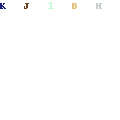
Solutions at the Shelf™ is a targeted, efficient way to deliver healthcare communications to consumers. Through information dispensers delivered in the aisles of the retail pharmacy, pharmaceutical brands can execute programs in geographic markets that fit their strategy and utilize appropriate sections of the store to engage their prospective patients. While there is no set formula to guarantee a perfect retail pharmacy program, there are certain things a brand can do to lead it down the yellow brick road path to a successful program. By taking a close look into our numerous case studies, some common threads emerged. Following this, we can find the elements of an effective Solutions at the Shelf™ effort!
We’re Not in Kansas Anymore: Location, Location, Location

We all have heard it before, “location, location, location,” but it bears repeating as it relates to in-store communications. Brands that properly place will “place”, so to speak. Location selection is based on identifying where the largest audience of potential patients can be reached. For brands that already have an over-the-counter (OTC) “counterpart”, placement near said OTC “counterpart” or in the aisle most closely associated with the condition is generally the most productive approach. For example, an information dispenser for a dry eye product would likely be placed in the eye care section of the pharmacy.
For brands with no correlative OTC product, things are a bit more challenging and that is where demographic factors, store traffic and related market data play a role. In this regard, the Solutions at the Shelf™ network functions in the same way as other media forms. For a Low Testosterone medication for example, the Men’s Health/Grooming aisles make the most sense. The choice of this section follows the same criteria as one would use when selecting the most appropriate television networks such as Spike or ESPN—namely, it is based on where a predominately male audience can be reached.
‘Tis the Season for a Successful Program
Another key attribute of a Solutions at the Shelf™ successful program is the selection of the right timeframe in which to execute because as we all know, timing is everything. Rx EDGE programs are available in multiple cycle dates throughout the year so that brands can integrate with other marketing activities or plan programs based on seasonality, product launch period, and other factors. Take allergy/cold/cough medications, clearly these symptoms mostly spring up during the spring, closely affiliated with pollen and allergies, and in the winter, when colds and the flu rear their ugly heads. It therefore, only makes sense to run a program in the months before and during these periods. Brands that have done this have seen ROI’s as high as $7.
The back to school time period can also be leveraged. Out of the summer swimming hole and into the cesspool school. School is a breeding ground for germs, exposing children to them on a daily bases. Allergy/cold/cough brands can once again take advantage, but other prescription brands such as those that treat head lice too gain from promoting at the outset of the school year.
Other brands can also benefit from having a program coincide with the back to school time frame as well. Because parents are shopping for and thinking about their children in the pharmacy, products in categories such as ADHD have found success implementing programs during this time.
Tell Me More: Messaging in the Aisle
Whether launching a new product or focusing on disease awareness, brands need to convey their message in a way that potential patients will find motivating and actionable. Here are some common techniques we’ve seen:
- First comers to the market launching a new product typically use savings offers as they help to draw in prospective patients.
- For brands that wish to take full advantage of their placement in a particular OTC section, posing a question as simple as, “Still feeling stuffed up?” can cause people to stop and question whether using yet another OTC is worth it.
- Brands that seek to educate their potential patients can provide a checklist of symptoms. Through this approach, patients can connect what they might have already been experiencing. Additionally, offering a list of “questions to ask a doctor” can stimulate a proper medical dialogue.
With these communication techniques, brands can optimally engage potential patients in the aisles of the pharmacy.
Off to See the Wizard
By picking the right location, time period, and communications brands can finally reach the Emerald City to make their wish of patient acquisition a reality. Remember you’ve always had the tools with the whole time for a successful program. Read through our case studies here.

